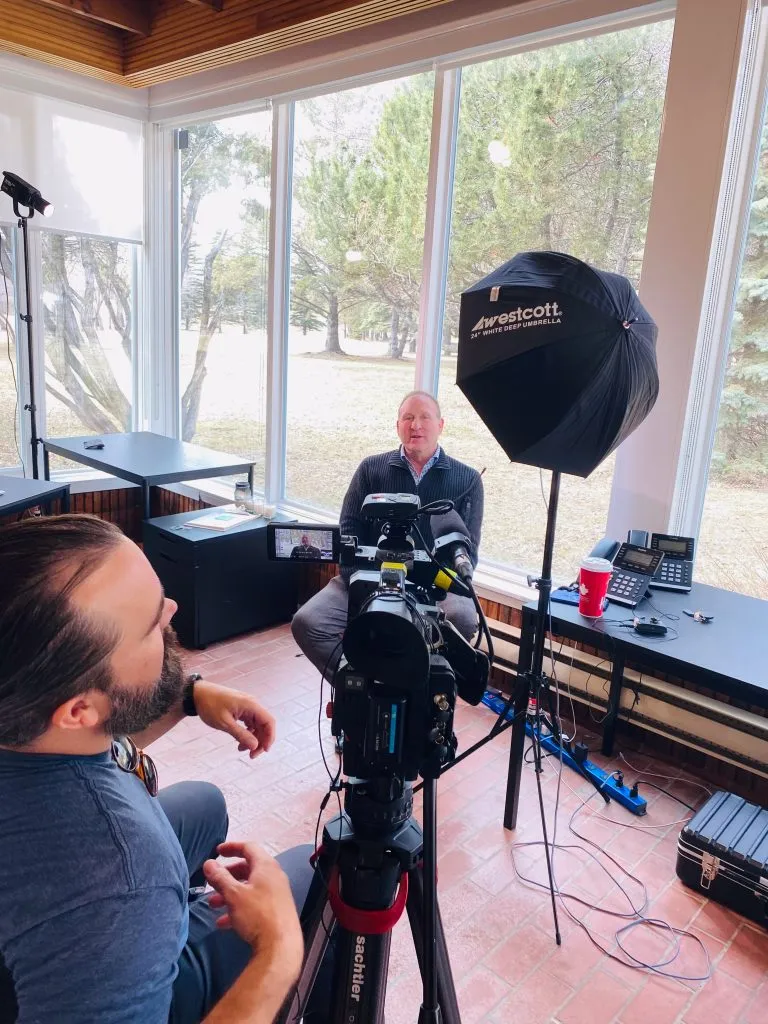Intervention is a term used when someone requires assistance to bring positive change to a scenario or to their lifestyle. You have probably heard it when someone is speaking about addiction and or counseling. What is intervention, and how would it aid with addiction? Here, it is explained in detail by Dr. Ian S. Rabb.
What is an Intervention?
The intervention is a planned process that is executed with the mutual dedication of the doctor (licensed interventionist), the patient’s family, and friends.
The health care professionals, alcohol and drug counselors, can also give intervention directly depending on the different scenario, but in some cases, it involves the loved ones too.
In a nutshell, this takes place when a drug addict is facing severe effects, compromising their health and daily life functioning, the people who care about them gather together to confront the drug addict and convince them to seek help.
Here, the goal of intervention is to break through denial, express love and concern, and accept addiction help or treatment.
Intervention is not only restricted to addiction; it can aid in any discipline of life, for instance, it can support in
- Healthcare: Where you can address medical or mental health issues by taking therapies
- Education: To support students in overcoming learning challenges
- Addiction Recovery: To seek help in fighting against substance abuse
- Social and Family Dynamics: To help resolve the conflicts or address behavioral issues
- Workplace settings: Where you can improve your employee performance
Types of Intervention
Intervention is a support mechanism that assists people in various scenarios, which is why each intervention is tailored to meet the specific needs of individual clients.
Usually, they are categorized as,
1. Simple Intervention
This is the basic intervention involving a one-on-one conversation. It often occurs between a loved one and the individual in an informal conversation, without involving a professional or group setting.
The key is genuine concern and honest dialogue. This one takes place during the early-stage addiction and also suits open-minded individuals.
2. Classic or Johnson Model Intervention
Dr. Vernon Johnson developed this type of intervention and is the most well-known intervention method. It involves a group of people (such as family, friends, or coworkers) confronting the individual in a structured manner with the help of a professional.
The process for this type includes
- Pre-planning meetings
- Writing personal statements
- Presenting consequences
- Offering immediate treatment options
This one is suitable for moderate to severe addiction and individuals in denial.
3. Crisis Intervention
Crisis intervention is a type of unplanned intervention that occurs when the individual poses an immediate danger to themselves or others due to substance abuse. The focus is on urgent response rather than planning.
This involves emergencies involving overdose, violence, or suicidal behavior.
4. ARISE Model (A Relational Intervention Sequence for Engagement)
The ARISE focuses on collaboration instead of confrontation. The addicted person is involved in the process from the beginning and encouraged to take responsibility through mutual respect.
In this model, families prefer a non-confrontational approach.
5. Family Systemic Intervention
This model views addiction as a family disease. The intervention aims to treat not just the addict but also the dysfunctional dynamics within the family unit.
These are best for long-term addiction with codependency issues.
Intervention for Addiction
An effective intervention for addiction is grounded empathy, which is planned strategically with firm boundaries. The interventions address the growing concerns when
- Substance use is escalating
- When there is denial or a lack of insight
- The worsening of physical, mental, and social well-being
- When the individual is attempting to quit, but fails
Since every individual is different and struggles with their own ways, that is why, the intervention is planned strategically in stages and executed step-by-step.
Do Intervention Work?
One of the common concerns is do interventions work and are helpful in bringing a person back to a healthy life. The answer is yes, they are highly effective and successful with the support of professionals and loved ones, but only if the person is taking it seriously.
The Timing and structure play a vital role in making an intervention successful. The effectiveness is at its maximum level when
- The right people are involved—others the individual is close to, not random acquaintances.
- The approach is compassionate, not accusatory.
- Expectations are clear, and meaningful consequences follow if help is refused.
- Professional guidance is in place, especially for complex emotional or mental health dynamics
How to Stage an Intervention?
Staging an intervention is more than confrontation; in fact, it is about taking compassionate action to help your loved one understand the severity of their issue—how they are damaging their life and relationships with family and everything.
That is why staging an intervention plays a vital role in getting started with the treatment. Here, it is explained step-by-step.
Step 1: Understand the Purpose of the Intervention
Before you begin planning, it is essential to understand why you are staging an intervention. Here, the goal is not to shame, blame, or force the person into submission.
Instead, it is designed to
- Help the individual recognize the problem
- Show them how their behavior affects others
- Offer them a clear path to treatment
- Set boundaries and consequences if they refuse help
This shift in mindset ensures the process is grounded in love, support, and long-term healing.
Step 2: Build the Right Intervention Team
Only rely on people who are truly connected to the individual who is struggling with substance abuse. Usually, the intervention team includes
- Parents or siblings
- Close friends or partners
- Employers or coworkers (if appropriate)
- A professional interventionist (highly recommended)
Try to Avoid People who are
- Currently using substances
- Anyone with unresolved personal conflicts with the individual
The ideal group size is 4 to 7 people. Too few, and the message may not carry weight; too many, and it can feel overwhelming.
Step 3: Consult a Professional Interventionist
Although intervention can be done without any professional help, with the help of a certified interventionist, the success of the interventions doubles.
This is because an interventionist brings
- Clinical expertise
- Neutral mediation
- Emotional regulation strategies
- Experience with resistance and denial
Professionals help ensure the intervention doesn’t spiral into confrontation or chaos.
Step 4: Research and Prepare Treatment Options
One of the keys to success for intervention is to offer immediate help. Hence, to get started with it, you need to prepare in advance.
Now, here, you have to look for
- Inpatient rehab programs
- Detox centers
- Outpatient recovery plans
- Support groups or therapists
For better assistance, make calls to confirm the program details, arrange transportation, and pack your bags if needed. If the patient agrees, immediately escort them before they get any second thoughts and bail out.
Step 5: Plan and Rehearse the Intervention
This step is important, yet crucial, as you have to plan it very carefully. Now here, the
Key things to plan are
- Time & Place: This can make a lot of difference. Here, you have to choose a neutral, quiet, and private location where a person feels secure and not triggered.
- Speaking Order: It can make or break the whole plan. Hence, you have to plan carefully and pre-decide who will speak first, second, and so on.
- Tone: Be sure to maintain a supportive tone, avoiding accusatory language to make that person feel that their loved ones are genuinely concerned and not accusing them.
It is recommended to rehearse your messages to ensure that there is no harsh wording and you don’t stammer while speaking.
Try to focus on factual statements that describe things straight from the heart. Share your thoughts regarding
- How the addiction has affected them personally
- Their love and concern for the individual
- What they hope the person will do (seek help)
- The consequence of refusing help
Step 6: Hold the Intervention
This could be the turning point,
During the intervention
- The group or team gets together before the individual arrives
- That individual is invited without a brief of the purpose of the meeting.
- Then, people read their prepared statements one by one
- After everyone has spoken, the treatment plan is presented
The aim of this is to make the person realize that all the people gathered there love them and want them to be successful.
Step 7: Offer Immediate Help
Give the participant time to respond once a treatment plan is tailored. In this scenario, it is normal to experience these emotions
- Shocked
- Defensive
- Angry
- Tearful
During this crucial period, you have to stay calm and reinforce your love to handle this situation. If they agree, escort them to the treatment, and in case they disagree or behave reluctantly, reinforce the boundaries and consequences.
Step 8: Follow Through No Matter What
Keep in mind that the intervention is not over if a person says no, the team must follow through with the consequences set. Otherwise, the person may feel they can continue their behavior without any accountability.
Consistency is key. Empty threats will undo the effort you have made.
Step 9: The Support Recovery and the Family
Intervention is only the initial step; ongoing support is critical to the recovery for the long term, but it is different for individuals and families.
For the individual
- This encourages the ongoing participation in rehab or counseling
- It supports sobriety milestones
- Avoid enabling behavior
For the family
- To attend support groups (e.g., Al-Anon, Nar-Anon)
- Join family therapy
Learn how to communicate in healthier, more supportive ways
What is Family Intervention?
Family intervention is aligned with loved ones to help and support a family member to recognize the severity of their addiction and encourage them to seek proper treatment.
It is based on the idea that addiction is not only affects the individual but also impacts the entire family system.
In a family intervention:
- Everyone shares how the addiction has affected them personally
- Communication is non-confrontational, honest, and empathetic
- The focus is on healing the family dynamic, not just fixing the addicted person
- A therapist or interventionist may guide the process to ensure it’s productive
Family interventions can lead to collective healing, stronger relationships, and increased accountability, making recovery more effective and long-lasting.
What is Therapeutic Intervention for Addiction?
Therapeutic intervention for addiction is an aligned, clinical approach that requires evidence-based therapies to help individuals recognize, understand, and recover from their addictive behavior.
Unlike conventional interventions, a family-led approach aims to push someone towards treatment, a therapeutic intervention that takes place during treatment and involves licensed mental health or addiction professionals.
These interventions are designed for the individuals according to their needs and may be delivered in various settings, such as inpatient rehabilitation centers, outpatient programs, or one-on-one counseling. The goal is to address the underlying emotional, psychological, and behavioral issues that contribute to addiction.
The therapeutic interventions usually comprise
- Cognitive Behavioral Therapy (CBT): This therapy helps patients identify and change harmful thought patterns that they are experiencing.
- Dialectical Behavior Therapy (DBT): It focuses on emotional regulation and coping mechanisms of a person.
- Motivational Interviewing (MI): This approach encourages personal motivation to change addictive behaviors and return to a healthy lifestyle.
- Contingency Management: This approach utilizes rewards to reinforce sobriety and promote healthy behaviors, thereby motivating individuals.
- Family Therapy: This type of therapy addresses relationship dynamics that may enable addiction or hinder recovery.
In a nutshell, a therapeutic intervention is essential for everyone suffering from different situations, especially substance addicts. This is because it is not just a physical dependence—it’s often rooted in trauma, stress, or co-occurring mental health disorders.
Intervention Stages and Intervention Steps: Are They Different?
Yes, both intervention stages and intervention steps are related, but they have their own purposes and are not the same.
Intervention Stages = Broad Phases of the Process
The stages refer to different and major phases or chronological blocks that take place from start to end in the intervention. They are categorized into four stages,
- Preparation
- Confrontation/Presentation
- Offering Help/Decision
- Follow-Through and Aftercare
In simple words, think of stages as the “when” in the timeline—what phase you are in during the intervention process.
Intervention Steps = Specific Actions Within the Stages
On the other hand, the steps are more elaborate and detailed actions or tasks within each stage to move the intervention forward.
For instance, during the preparation stage, the steps include
- Selecting the intervention team
- Writing personal statements
- Rehearsing the conversation
- Choosing a time and location
- Arranging treatment options
So, the steps are tactical; they are the how behind each stage.
Common Myths About Interventions
There are a few misconceptions associated with receiving interventions. This includes
1.“They have to hit rock bottom first.”
This is not true. The earlier the intervention is taken, the better it is, as it prevents severe damage.
2.“Interventions always fail.”
False. Failure of intervention is rare and depends on the effort the person is putting in. When it is done properly, the success is definite.
3.“It’s just a confrontation.”
No, intervention is more than just confrontation. It is a supportive, structured conversation that motivates a person to get back on track.
When Is the Right Time for Intervention?
The timing of the intervention is crucial. It is essential to recognize that the tipping point between loving concern and crisis can be difficult.
Hence, consider staging an intervention when you notice,
- Major life disruptions: The person has lost their job, is facing legal trouble, and has health emergencies.
- Relational breakdowns: When they are ready to give up on the people who care for them. Go for divorce, alienation, or family estrangement.
- Escalating behavior: The drinking or using more frequently or to dangerous extremes.
- Trying to quit: When they fail to put in the effort, stop, or cut down on the substance use.
- Disturbed mental health: The onset of dangerous mental health symptoms (e.g., suicidal thoughts)
While you don’t need to wait for “rock bottom,” letting risks escalate can make interventions riskier. If any of your close friends or family members are going through this, organizing an intervention for addiction before irreversible harm is necessary to ensure the best chance of success.
Intervention for Addiction vs Intervention for Alcoholism
Although the purpose of intervention for substance abuse is similar, you should know that the focus for alcohol intervention and intervention for addiction is different.
The intervention for addiction (e.g., opioids, methamphetamine) may require:
- Medical detox planning
- Risk of overdose (naloxone distribution)
- Awareness of withdrawal severity
Whereas, an intervention for alcoholism might focus instead on:
- Long-term liver and heart consequences
- Benefits of sober living
- The importance of support groups like AA
However, overarching principles—such as love, structure, and treatment—remain the same. Here, this will help you to understand it in a better way.
| Aspect | Intervention for Addiction | Intervention for Alcoholism |
| Substance Involved | Illicit or prescription drugs (opioids, meth, cocaine, etc.) | Alcohol (beer, wine, liquor) |
| Withdrawal Risks | Often severe and potentially life-threatening (e.g., opioids, benzodiazepines) | Can also be life-threatening (e.g., delirium tremens in alcohol withdrawal) |
| Medical Detox Needed | Frequently required, especially for hard drugs | Often necessary for long-term alcohol users |
| Behavioral Impact | May include extreme mood swings, paranoia, risky behaviors | May involve aggression, memory loss, and impaired judgment |
| Legal Consequences | Higher likelihood of legal trouble (possession, trafficking, theft) | Possible DUI, public intoxication, or domestic issues |
| Social Stigma | Often perceived with more stigma due to association with “hard drugs” | Alcoholism may be more socially accepted or downplayed |
| Treatment Options | May require intensive inpatient or dual diagnosis treatment | Can respond well to alcohol-specific rehab and 12-step programs |
| Intervention Focus | Addressing dangerous habits and illegal drug use | Addressing chronic drinking and its normalization in social settings |
| Common Denial Statements | “I’m not like those people,” or “It’s just recreational.” | “I can quit anytime,” or “Everyone drinks.” |
| Support Resources | Narcotics Anonymous (NA), rehab centers, detox clinics | Alcoholics Anonymous (AA), sober living, Al-Anon for family |
| Intervention Messaging Tips | Highlight life-threatening risks, loss of control, and family impact | Focus on health issues, emotional effects, and relationship deterioration |
| Common Triggers | Trauma, peer pressure, chronic pain, mental illness | Stress, social drinking, loneliness, and family history |
| Therapeutic Models Often Used | Johnson Model, ARISE Model, CRAFT | AA/12-Step integration, family therapy, motivational interviewing |
| Likelihood of Overdose | High (especially with fentanyl, heroin, stimulants) | Lower than drug overdose, but alcohol poisoning and liver failure are possible. |
What is Considered as a Successful Intervention?
When an individual accepts help and agrees to take the relevant treatment or seek professional support as a direct result of the intervention process, consider it a successful intervention.
However, speaking of it, success is not defined as immediate compliance; it involves the process of planting the seed of awareness, opening communication, and encouraging them to take a long-term behavioral change.
Other than that, a successful intervention is deemed to be well-planned, emotionally balanced, and solution-focused. The participants should express their concern with compassion rather than anger, clearly outline the consequences of refusing help, and provide a solid plan for the treatment.
Now, here, the presence of a professional interventionist can significantly increase success rates by guiding conversation and keeping emotions in check.
Conversely, the post-intervention’s success is also measured by the follow-through, which refers to completing treatment, attending counseling, or taking part in ongoing support programs. The intervention will still be successful, leading to self-realization for the future, even if the person refuses initial help.
What Happens After the Intervention?
Do intervention work? What happens after the intervention? How long would it take? These are the common questions that come to mind when you are skeptical about whether or not you should take it.
Now, here, after intervention, the whole process relies on it; if the individual agrees to seek help, the next immediate step is to escort them to the prearranged treatment facility or program without delay.
Keep in mind that in this scenario, timing is key; any hesitation results in second thoughts, denial, or even leads to resistance. At that moment, the caretaker must be pre-prepared for escorting the participant by arranging admission paperwork, transportation, and a packed bag.
In the case the individual refuses treatment, families must follow through on the consequences outlined during the intervention, whether it is cutting their financial support or limiting the contact, keep in mind it is for their betterment and not like a punishment.
Without worrying about the outcomes, the family members should also engage in their own recovery, which includes joining support groups, attending therapy, or joining family counseling. This will help to process the emotions and rebuild healthy family dynamics.
If the interventions are followed with continuous support, accountability, and professional guidance, it will become vital in weeks and months.
However, with structure, compassion, and consistency, many individuals who undergo an intervention go on to embrace treatment and maintain long-term sobriety.
Summing Up Interventions for Addiction
Speaking of addiction, it is a medical condition that requires a structured treatment that is tailored according to the individual’s condition. Interventions are powerful tools that help redirect someone’s life path from destruction to recovery.
If you have anyone struggling with substance abuse, take immediate steps and start planning. For that, you can reach out to an interventionist or a health professional to help you step through the process effectively.




Leave a Reply